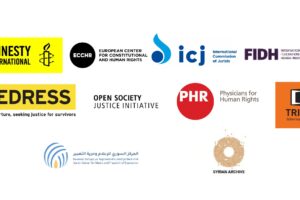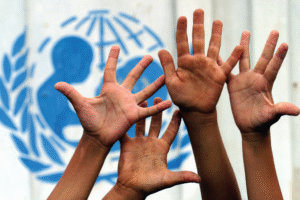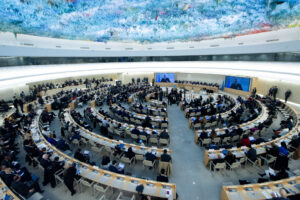2.1 Ms. Joslin and Ms. Rowan commenced a lesbian relationship in January 1988. Since that point, they have jointly assumed responsibility for their children out of previous marriages. In living together, they have pooled finances and jointly own their common home. They maintain sexual relations. On 4 December 1995, they applied under the Marriage Act 1955 to the local Registrar of Births, Deaths and Marriages for a marriage licence, by lodging a notice of intended marriage at the local Registry Office. On 14 December 1995, the Deputy Registrar-General rejected the application.
2.2 Similarly, Ms. Zelf and Ms. Pearl commenced a lesbian relationship in April 1993. They also share responsibility for the children of a previous marriage, pool financial resources and maintain sexual relations. On 22 January 1996, the local Registry Office refused to accept a notice of intended marriage. On 2 February 1996, Ms Zelf and Ms Pearl lodged a notice of intended marriage at another Registry Office. On 12 February 1996, the Registrar-General informed them that the notice could not be processed. The Registrar-General indicated that the Registrar was acting lawfully in interpreting the Marriage Act as confined to marriage between a man and a woman.
2.3 All four authors thereupon applied to the High Court for a declaration that, as lesbian couples, they were lawfully entitled to obtain a marriage licence and to marry pursuant to the Marriage Act 1955. On 28 May 1996, the High Court declined the application. Observing inter alia that the text of article 23, paragraph 2, of the Covenant “does not point to same-sex marriages”, the Court held that the statutory language of the Marriage Act was clear in applying to marriage between a man and a woman only.
2.4 On 17 December 1997, a Full Bench of the Court of Appeal rejected the authors’ appeal. The Court held unanimously that the Marriage Act, in its terms, clearly applied to marriage between a man and a woman only. A majority of the Court further went on to hold that the restriction in the Marriage Act of marriage to a man and a woman did not constitute discrimination. Justice Keith, expressing the majority’s views at length, found no support in the scheme and text of the Covenant, the Committee’s prior jurisprudence, the travaux préparatoires nor scholarly writing for the proposition that a limitation of marriage to a man and a woman violated the Covenant.
Consideration of the merits
8.2 […] Article 23, paragraph 2, of the Covenant is the only substantive provision in the Covenant which defines a right by using the term “men and women”, rather than “every human being”, “everyone” and “all persons”. Use of the term “men and women”, rather than the general terms used elsewhere in Part III of the Covenant, has been consistently and uniformly understood as indicating that the treaty obligation of States parties stemming from article 23, paragraph 2, of the Covenant is to recognize as marriage only the union between a man and a woman wishing to marry each other.
8.3 In light of the scope of the right to marry under article 23, paragraph 2, of the Covenant, the Committee cannot find that by mere refusal to provide for marriage between homosexual couples, the State party has violated the rights of the authors under articles 16, 17, 23, paragraphs 1 and 2, or 26 of the Covenant.
Individual opinion of Committee members Mr. Rajsoomer Lallah and Mr. Martin Scheinin (concurring)
We found no difficulty in joining the Committee’s consensus on the interpretation of the right to marry under article 23, paragraph 2. […] The provision in no way limits the liberty of States, pursuant to article 5, paragraph 2, to recognize, in the form of marriage or in some other comparable form, the companionship between two men or between two women. However, no support can be drawn from this provision for practices that violate the human rights or dignity of individuals, such as child marriages or forced marriages.
As to the Committee’s unanimous view that it cannot find a violation of article 26, either, in the non-recognition as marriage of the same-sex relationships between the authors, we wish to add a few observations. This conclusion should not be read as a general statement that differential treatment between married couples and same-sex couples not allowed under the law to marry would never amount to a violation of article 26. On the contrary, the Committee’s jurisprudence supports the position that such differentiation may very well, depending on the circumstances of a concrete case, amount to prohibited discrimination.
Contrary to what was asserted by the State party (para. 4.12), it is the established view of the Committee that the prohibition against discrimination on grounds of “sex” in article 26 comprises also discrimination based on sexual orientation. And when the Committee has held that certain differences in the treatment of married couples and unmarried heterosexual couples were based on reasonable and objective criteria and hence not discriminatory, the rationale of this approach was in the ability of the couples in question to choose whether to marry or not to marry, with all the entailing consequences. No such possibility of choice exists for same-sex couples in countries where the law does not allow for same-sex marriage or other type of recognized same-sex partnership with consequences similar to or identical with those of marriage. Therefore, a denial of certain rights or benefits to same-sex couples that are available to married couples may amount to discrimination prohibited under article 26, unless otherwise justified on reasonable and objective criteria.
However, in the current case we find that the authors failed, perhaps intentionally, to demonstrate that they were personally affected in relation to certain rights not necessarily related to the institution of marriage, by any such distinction between married and unmarried persons that would amount to discrimination under article 26. Their references to differences in treatment between married couples and same-sex unions were either repetitious of the refusal of the State party to recognize same-sex unions in the specific form of “marriage” (para. 3.1), an issue decided by the Committee under article 23, or remained unsubstantiated as to if and how the authors were so personally affected (para. 3.5). (…)
link to the full text of the Communication: http://www.unhchr.ch/tbs/doc.nsf/(Symbol)/e44ccf85efc1669ac1256c37002b96c9




